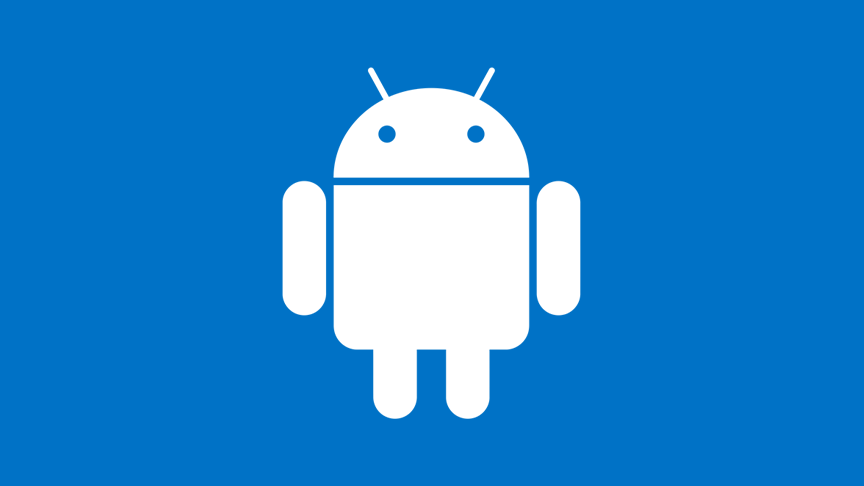The Evolution of Android: A Comprehensive History of the World’s Most Popular Mobile Operating System

The Android operating system is one of the most popular mobile operating systems in the world. It is owned by Google and was first introduced in 2008. Since then, it has gone through many changes and updates, becoming the powerful and versatile operating system we know today. In this article, we will take a look at the history of the Android operating system, from its humble beginnings to its present-day dominance in the mobile market.
Early Beginnings: In 2003, a group of four developers – Andy Rubin, Rich Miner, Nick Sears, and Chris White – founded Android Inc. The company’s goal was to create an operating system for digital cameras. However, after a while, the team realized that the future of computing was in mobile devices, and they decided to pivot their focus towards creating an operating system for smartphones.
The first Android prototype was created in 2005, and it was based on the Linux operating system. It was designed to be open-source, meaning that developers could modify and customize it to their liking. Google saw the potential in Android and acquired the company in 2005, with Rubin becoming the head of the Android division at Google.
Cupcake and Donut: The first commercially available Android device was the HTC Dream, which was released in 2008. It was powered by Android 1.0, which was codenamed “Cupcake”. Cupcake was the first major update to the Android operating system, and it introduced several new features, such as an on-screen keyboard, support for third-party widgets, and video recording.
In 2009, Google released Android 1.6, which was codenamed “Donut”. Donut brought several new features to the table, including support for CDMA networks, improved voice search capabilities, and the ability to search through the Android Market (now known as Google Play).
Eclair and Froyo: In 2009, Google released Android 2.0, which was codenamed “Eclair”. Eclair was a major update to the operating system, introducing several new features, such as support for multiple accounts, improved camera functionality, and support for Microsoft Exchange. It was followed by Android 2.2, codenamed “Froyo”, which introduced several new features, such as support for Adobe Flash, improved performance, and the ability to turn your Android device into a portable Wi-Fi hotspot.
In 2010, Google released two major updates to Android. Android 2.1, codenamed Eclair, included several new features such as live wallpapers, pinch-to-zoom functionality, and support for multiple account synchronization. Android 2.2, codenamed Froyo, followed in May 2010 and introduced support for Adobe Flash Player, USB tethering, and the ability to store apps on the SD card.
Android 2.3, codenamed Gingerbread, was released in December 2010 and included a revamped user interface, support for near-field communication (NFC) technology, and improved power management. Android 3.0, codenamed Honeycomb, was released in February 2011 and was designed specifically for tablet devices. It included a new “holographic” user interface, support for multicore processors, and improved multitasking capabilities.
In October 2011, Google released Android 4.0, codenamed Ice Cream Sandwich. This update unified the user interface for both smartphone and tablet devices and included several new features such as facial recognition unlocking, improved voice recognition, and the ability to take screenshots without the need for third-party apps. Android 4.1, codenamed Jelly Bean, followed in June 2012 and introduced features such as expandable notifications, Google Now, and support for multiple user accounts.
Android 4.4, codenamed KitKat, was released in October 2013 and included several performance improvements and new features such as a full-screen immersive mode and support for the new ART runtime. Android 5.0, codenamed Lollipop, followed in November 2014 and introduced a new “Material Design” user interface, support for 64-bit processors, and several new features such as “smart lock” and “priority notifications”.
In 2015, Google released Android 6.0 (Marshmallow), which focused on improving the user experience with features like Doze Mode (which helps to conserve battery life), App Permissions (which gives users more control over what data apps can access), and Google Now on Tap (which provides contextual information based on what’s on the user’s screen).
Android 7.0 (Nougat) was released in 2016, and brought features like split-screen mode (which allows users to run two apps side-by-side), improved notifications, and the ability to customize the Quick Settings menu. Android 8.0 (Oreo) followed in 2017 and introduced features like Picture-in-Picture mode (which allows users to watch videos while doing other tasks), notification channels (which gives users more control over how they receive notifications), and improvements to the Autofill feature.
In 2018, Google released Android 9.0 (Pie), which brought improvements to the user interface, as well as features like Adaptive Battery (which uses machine learning to prioritize battery usage for the apps the user uses the most) and App Actions (which suggests actions based on the user’s context and usage patterns). Android 10 followed in 2019 and brought features like a system-wide dark mode, improved privacy settings, and the introduction of the gesture-based navigation system.
The most recent version of Android is Android 11, which was released in 2020. Android 11 brings improvements in areas like messaging, media controls, and device controls. It also introduces features like Bubbles (which allows users to quickly access conversations from any screen), one-time permissions (which gives users more control over their privacy), and improvements to the Voice Access feature (which allows users to control their device with their voice).
In conclusion, the history of the Android operating system is a fascinating one, marked by rapid innovation and growth. From its humble beginnings as a startup project, to its current status as the most popular mobile operating system in the world, Android has come a long way. With each new version, Google has introduced new features and improvements, making Android more user-friendly, more powerful, and more innovative. As we look to the future, it will be exciting to see what new developments Google has in store for this dynamic and constantly-evolving platform.


